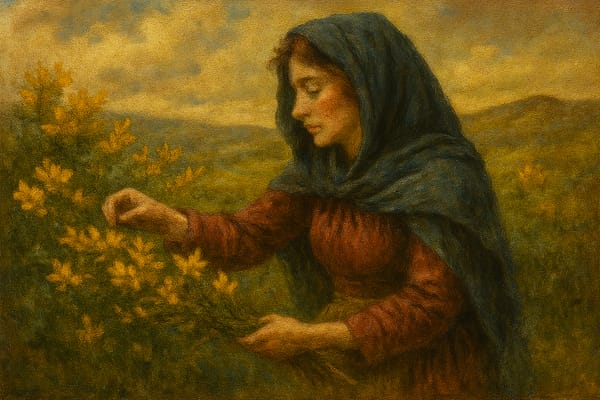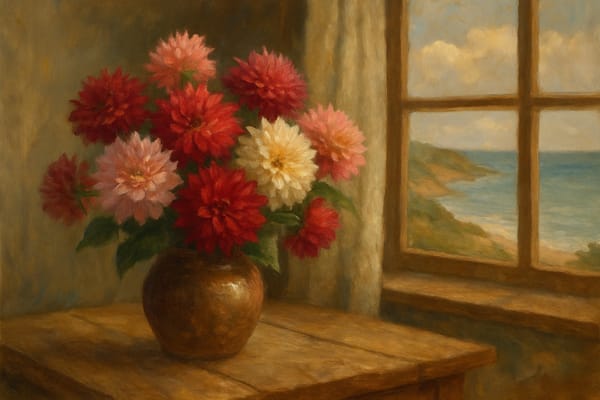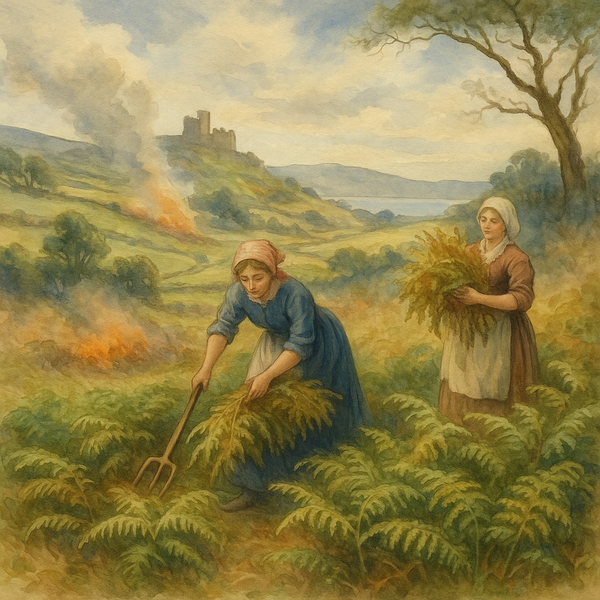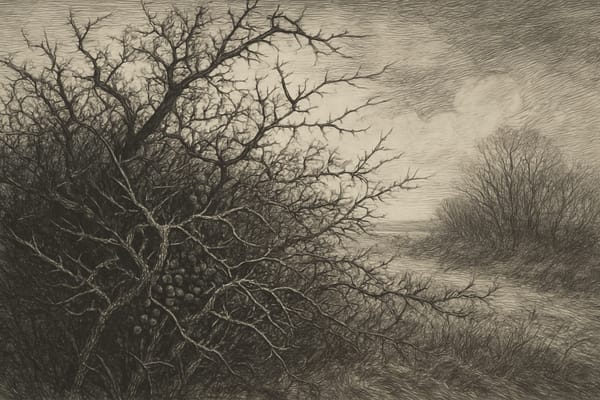Few plants light up Cornwall’s rugged landscape like the gorse. With its vibrant yellow blooms and fierce, thorny defences, gorse (Ulex europaeus) stands as a living emblem of protection, resilience, and enduring tradition. More than a mere hedgerow shrub, gorse threads its way through Cornish folklore, seasonal rituals, and communal identity—offering both a physical and spiritual shield woven deeply into the fabric of local life.
The Plant of Protection and Purification
In Cornish tradition, gorse has long been seen as a natural guardian. Come May Day, households adorned their doorways and gateposts with garlands of golden gorse blossoms, a vivid ritual believed to ward off evil spirits, ill-wishers, and bad luck. Far from a simple floral decoration, this act was a ceremonial safeguarding of the home, woven into the rhythms of the turning year.
At Beltane, one of the oldest festivals in the Celtic calendar, gorse took on a fiery role—burned in ceremonial fires to cleanse land, livestock, and community. The crackling flames were thought to drive out malevolent influences, a belief rooted in both ancient spirituality and the pragmatic need for renewal at the season’s cusp. The fiery nature of gorse, with its quick-burning, resin-rich wood, only amplified its symbolic potency as a purifier.
Even the simple planting of gorse around property boundaries wasn’t merely for stock-proof hedging. It was a spiritual act—a hedge against misfortune and a warding barrier against faery mischief or the wandering dead.
Legends of Resilience and Enduring Bloom
No tale of gorse is complete without the oft-repeated Cornish saying: “When gorse is out of bloom, kissing is out of season.” Given that gorse flowers almost year-round, the adage speaks to constancy, hope, and the evergreen presence of love and vitality. In a landscape known for its exposed moors and coastal cliffs, gorse’s tenacity became a living metaphor for Cornwall’s own resilient spirit.
Folklore celebrated this endurance. Where other plants wilted or withered, gorse thrived—clinging to the poorest soils, flowering amid winter storms, and blazing gold against grey skies. For Cornish communities, it stood not just as a boundary marker but as a beacon of perseverance and cheer amid adversity.
Gorse in Rituals, Fire, and Community Life
Throughout Cornwall, gorse featured in community customs, from symbolic garlands exchanged at doors to ceremonial burnings that echoed ancient purification rites. On stormy nights, fires kindled with gorse were said to comfort wandering spirits or honor ancestors—an offering of light in darkness.
Even in acts of everyday kindness, such as giving a sprig of gorse to a neighbour on May Day, the plant reinforced bonds of goodwill, blending social custom with protective charm.
Yet its power demanded respect. As with elder and hawthorn, folklore warned against bringing gorse indoors—lest its wild, protective spirit invite misfortune. It was a plant to be honored at the thresholds of life, but never crossed inappropriately.
The Legacy of Gorse in Cornwall’s Living Culture
Today, gorse continues to blaze in Cornish festivals and community life. At events like the Golowan Festival, midsummer bonfires rekindle its ancient symbolism—fire, renewal, and resilience celebrated beneath the summer skies.
Gorse also holds a quiet place in art, weddings, and public ceremonies, its golden blossoms speaking of continuity, unity, and Cornwall’s enduring link with its land and legends. As part of Gorsedh Kernow’s bardic traditions, gorse stands as a symbol of Cornish identity, peace, and cultural revival.











